Lots of folks talk about wild edibles as a component of their survival strategy if they’re ever stranded in the wilderness, but precious few know what that actually looks like.
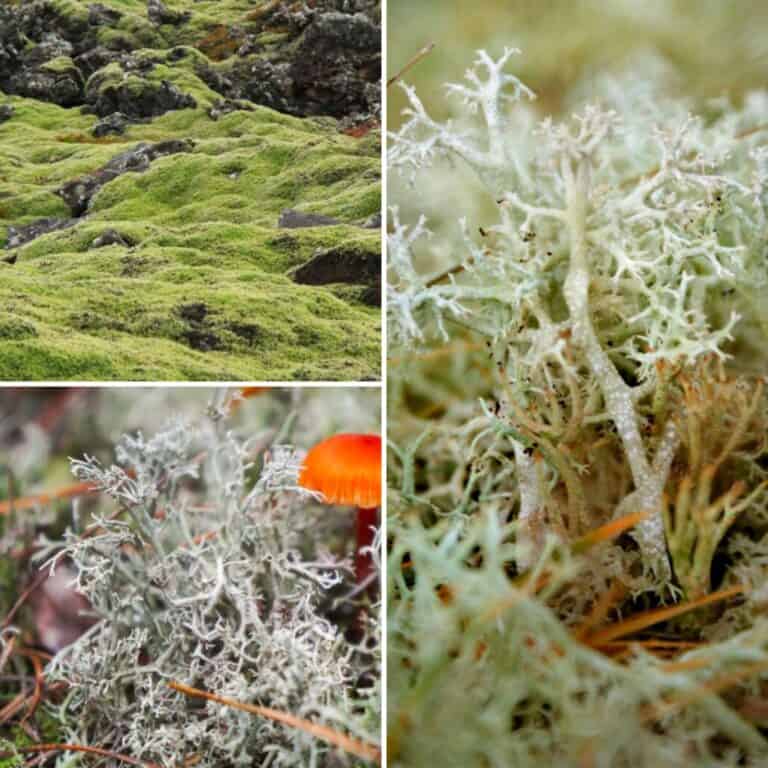
You aren’t going to have bountiful bushes full of berries and edible tree nuts piled up waist-deep!
Instead, you’re going to have all sorts of unappetizing tidbits from various plants to eat, and some of them are downright nasty, though they could keep you alive.
How about lichen, for instance? Is lichen edible?
Yes, most kinds of lichen are edible and reasonably safe to eat with minimal preparation. However, most lichens are highly acidic and some contain dangerous poisons, so positive identification is critical.
Lichens are a unique life form, and more importantly for our purposes, they grow all over the world in every kind of environment, from the most sandblasted, sun-baked deserts to the darkest and coldest of polar regions.
I promise you this, they will never be the first thing you reach for to eat, but they might be the thing that keeps you alive.
Keep reading and I’ll tell you what you need to know about edible lichens below.
What is Lichen, Anyway?
Have you ever wondered just what lichen is? It turns out, it’s pretty fascinating: lichens are actually a communal organism, not really a plant at all if you want to get technical about it.
Lichens consist of a fungus and then some type of bacteria or algae that is living in and among the structure of the fungus itself.
Together, they form a sort of partnership that can keep each other safe and provide food for one another from the environment around it.
This can take the form of photosynthesis or even the extraction of nutrients itself from whatever plant it is growing on, or even bare stone!
And as mentioned, the symbiosis of the organisms that make up lichen is more than the sum of the parts.
It enables any given species to survive in a huge range of temperatures and environments. Amazing stuff, and even more amazing because most of them are edible!
Is Lichen the Same Thing as Moss?
No. To clarify, lichen is not the same thing as moss even though the words are often used interchangeably in common conversation, and it’s made all the more complicated by the fact that true religion often has the word moss in its common name. Like reindeer moss, for instance.
But, all you need to keep in mind now without getting too far into the weeds, or should I say too far into the moss, is that lichen and moss are very different biologically, so you can learn to easily identify most types by sight with a little practice and study.
What is the Nutritional Content of Lichen Like?
Not great, although it is a vitally important link in the food chain for some animals like reindeer.
Most lichens are pretty much all carbs, and potentially they’ll have just a tiny bit of protein along with a smattering of various vitamins and minerals.
We know that much, but when it comes to the actual nutritional value, detailed analysis just hasn’t been done on most species (except as they are important to indigenous wildlife of interest, or of economic importance).
Practically speaking, you can eat edible lichen and get energy and a few trace vitamins and minerals you need to stay alive.
You should know that many cultures around the world, from antiquity to today, have eaten and continue to eat them as a staple or treasured cultural ingredient.
Much of the time, it’s used as an ingredient to bulk up other foods or to serve as a base for bread, soup, stew, and so forth. In this regard, lichen can still be a viable and important survival food.
Is Lichen Safe to Eat Raw?
Yes, generally, but with a few reservations. Safe lichen varieties are OK to eat raw, but they have the typical drawbacks of all wild edibles, namely contamination and playing host to harmful bacteria and other germs.
Rinsing the lichen and proper preparation will reduce or eliminate these risks.
However, it’s worth noting that pretty much all types of lichen are intensely acidic and have a tendency to cause an upset stomach when eaten unprepared, though this is rarely so serious as to cause real issues…
Is Lichen Safe to Eat Cooked?
Yes, it is, and this is the preferred way to eat it if you can. Aside from being safer all around and easier to digest, cooked lichen also tastes a lot better.
What Does It Taste Like?
The taste of lichen is somewhat variable, and subject to interpretation, but frankly, most of them taste downright nasty by human standards.
Most types of lichen, when eaten raw, will have a crunchy or slimy texture. The taste is usually described as ashy, bland or just bad, although some folks relate them to edible, if plain, mushrooms.
The ashy taste of lichen is associated with its growth habit, which is invariably very, very slow.
Any patch that you come across that is of a size suitable for harvesting to eat has probably been there for decades, and so accordingly has incorporated a lot of environmental dust, debris and other crud into itself.
Combine that with the acidity of lichen and you have a flavor that’s very reminiscent of fireplace ashes!
How Should You Prepare Lichen?
Proper cooking of any lichen involves soaking and then boiling. Repeatedly soaking lichen in water for at least 30 minutes and preferably a couple of hours before changing out the water for fresh and repeating the process.
This will leach out many of the contaminants that make it taste pretty gross, and also give it a good wash in effect to reduce the presence of harmful germs.
Once this is done at least a couple of times, the lichen can then be boiled for a little while to make it softer and improve the flavor, though it is still quite bland.
Note that some types are of a suitable structure to be gently roasted by an open fire. More on that in a minute…
After this, they’re good for inclusion in soups, stews or other dishes.
The Most Popular and Common Edible Lichen Species
There are quite a few edible lichen species out there, and the vast majority contain nothing that is overtly toxic to people.
That being said, only a handful offer any meaningful amount of nutrition and are more or less palatable. Be on the lookout for the following if they grow in your area:
1. Wila
A common North American lichen, and the one that is most known to Westerners as a potential source of food. Today, it’s considered a delicacy.
Wila grows high up on dead or dying conifer trees, and has a dark or golden brown color. Lengthy and hair-like appearance, regularly growing longer than three and a half feet.
Typically encountered at elevations between 1,000 and 3,000 feet.
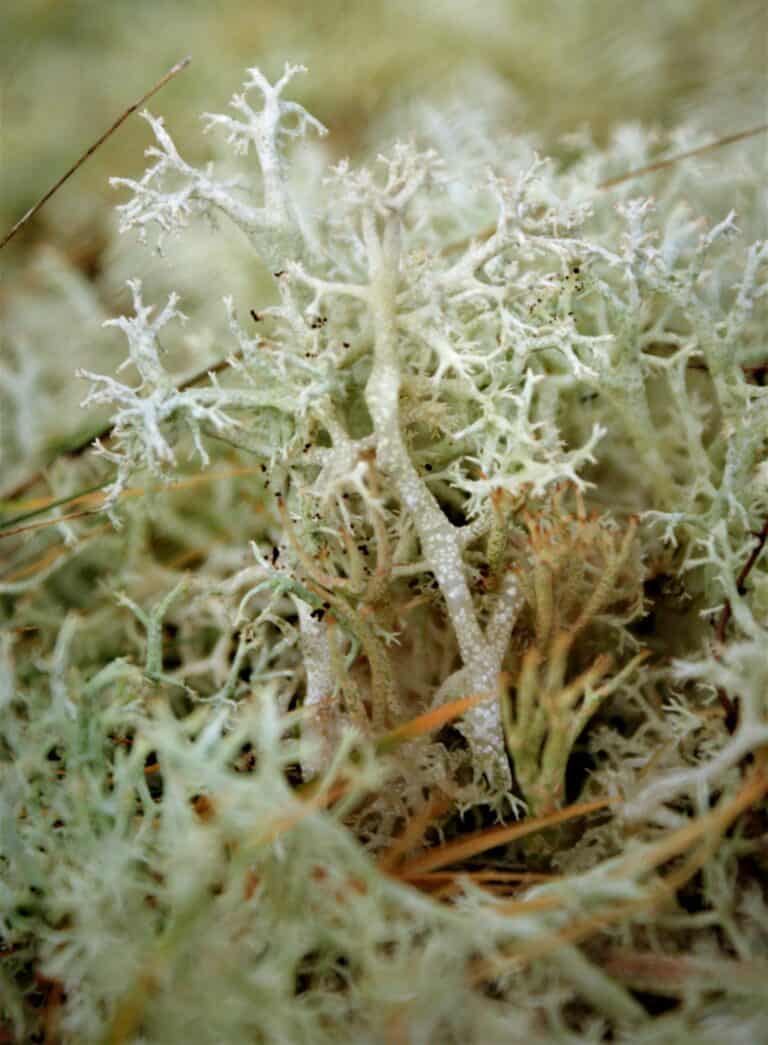
2. Reindeer Moss
Reindeer moss grows worldwide in all kinds of environments, but it’s typically found in very cold tundra or boreal forests.
It has an appearance that looks similar to reindeer antlers or icicles, and is very crunchy. Reindeer moss is safe to eat raw, but very acidic and may cause indigestion.

3. Kalpasi
Found throughout Asia and parts of Europe, particularly Ireland. Routinely found growing on acidic bark or stones with high silica content.
Leaf-like structure looks similar to compacted oak leaves, grows blue-green with a grayish color at the fringes, while leaves at the base are black and bordered at the tips with tan. Kalpasi is used culinarily as a spice.
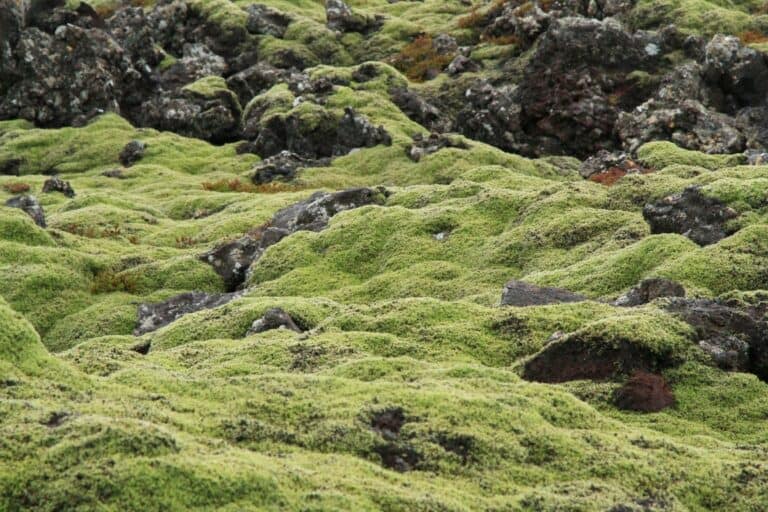
4. Iceland Moss
Found across North America, Europe and parts of Asia. Iceland Moss grows at high elevations throughout mountain ranges.
Typically a leather brown color, and grows in rolling folds on trunks and branches. Looks very much like moss, hence the name, and has a mottled gray-green to autumn green color.
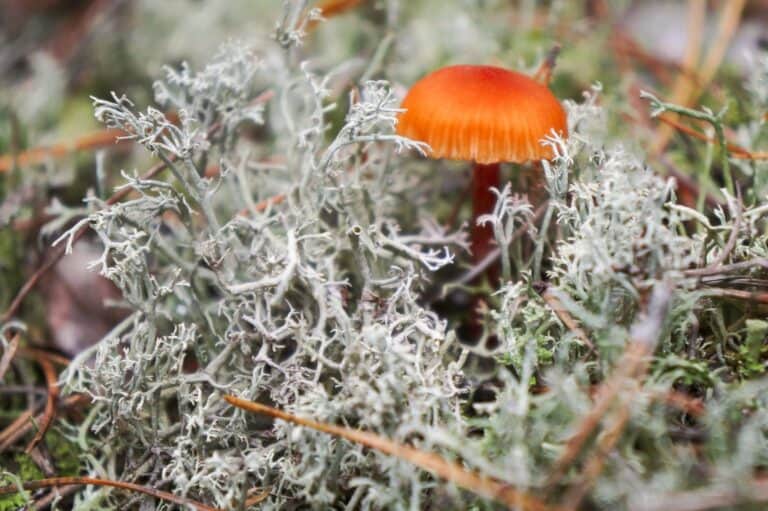
5. Oakmoss
Another lichen with moss in the name, oakmoss grows in many of the same environments where reindeer moss can be found, and it’s particularly prominent on evergreens.
Oakmoss has a branching, frond-like appearance and is typically a pale green or light gray color. Tangled appearance; looks like a tumbleweed when mature.
Dangerous Lichen Species to Watch Out For
Not all lichens are safe to eat. In fact, some are quite toxic. There have hardly been conclusive studies on lichen toxicity, but so far it’s speculated that around 10% of all species worldwide contain dangerous toxins, though only a portion of those contain significant amounts.
Two of the most notably dangerous ones are below:
1. Wolf Lichen
Found in the Western half of North America and much of continental Europe, this is a bright yellow-green lichen, made so by the presence of vulpinic acid which is hazardous to mammals.
Has a scraggly, barren, appearance like a bush stripped of all foliage. Historically harvested and used as a poison against wolves and foxes.
2. Powdered Sunshine
A rare lichen with a sickly yellow color, it also contains high concentrations of toxins which can cause liver damage in mammals, including people.
It would take a fair bit for substantial damage to occur and humans, but you can’t risk it. Found in North America and Eastern Europe on birch trees.
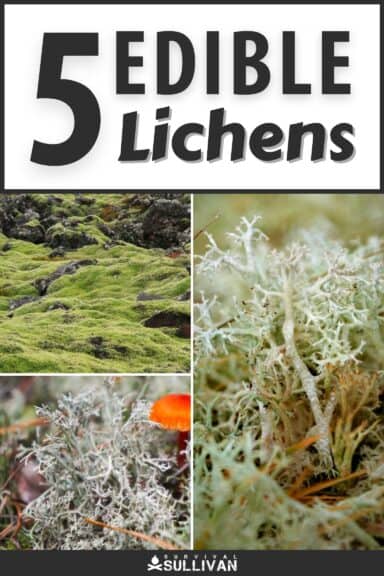
The post Is Lichen Edible? These 5 Are… appeared first on Survival Sullivan.
By: Tom Marlowe
Title: Is Lichen Edible? These 5 Are…
Sourced From: www.survivalsullivan.com/edible-lichens/
Published Date: Tue, 24 Oct 2023 16:00:00 +0000
-------------------------------------------------------------------------
Did you miss our previous article...
https://outdoorsnewswire.com/survivalist/are-tasers-legal-in-alaska-what-you-should-know
 CampingSurvivalistHuntingFishingExploringHikingPrivacy PolicyTerms And Conditions
CampingSurvivalistHuntingFishingExploringHikingPrivacy PolicyTerms And Conditions
